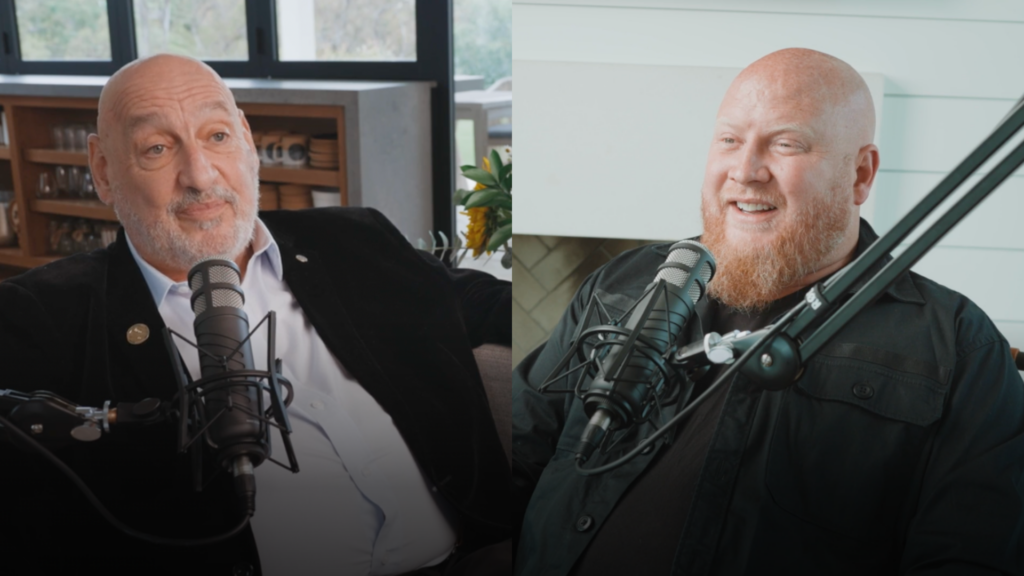What does preparing the perfect Old Fashioned have to do with making a successful hire? A lot more than you might think!

According to Liquor.com, The Old Fashioned is arguably the grandfather of all cocktails. Simple yet complex, subtle yet bold, it is easy to see why the three-ingredient classic, believed to date back to the early years of the Republic, remains so revered. Ordering an Old Fashioned at a bar will earn you an approving nod. Though it is relatively easy to mix, it is just as easy to screw up.
It sounds a little like the hiring process, don’t you think? You have to find the perfect mix of ingredients to ensure that the person you hire is the right person for the right seat. In theory, it sounds easy, but it is just as easy (and costly) to screw up.
How hard is it to mix sugar, bitters, bourbon/whiskey, and a dash of water?
Looking at the Whole Person and using the Head, Heart, and Briefcase approach helps us create the perfect candidate cocktail. All of the ingredients work together to provide insights towards a candidate who will be able to thrive in your organization, inspire those around, and likely be a big part of attracting future top talent.
When making an Old Fashioned, each ingredient provides an experience (a glass of bitters… not really a pleasant one), but when mixed, you end up with some rather special flavors that are greater than the sum of its individual parts.
It’s the same with the Head, Heart, Briefcase. Using each one of these approaches on their own will definitely yield insights and results, but it takes mixing them together to capture the full picture of what the candidate looks like, AND how they will likely perform in your organization.
The Head, Heart and Briefcase is as follows:
- Head: Behavioral Attributes and Cognitive Ability
- Heart: Value Alignment – motivations and interests
- Briefcase: Professional Achievement Profile
When hiring, most companies fail to consider all three components. We’ve proven through our process that evaluating all three not only gets you the right hire, but also provides valuable information to help engage, retain and develop your people.
Most companies will look at two main areas when hiring. They look at the resume for skills and experience alignment, and they conduct an interview to obtain the story behind the resume, and some insights into the person. It’s like an Old Fashioned without the sugar, if you will…
A person isn’t just what they do. People are complex. What makes us unique is: the mix of desires, beliefs, behaviors, connection points, responses to situations, how we approach the way we work, the relationships we form or find ourselves in, our interactions, emotions, feelings, goals, plans, gifts, abilities, values, strengths and weaknesses, and that’s just scratching the surface. People are predictably unpredictable. Understanding the HOW and the WHY is necessary when getting to know the WHO.
That level of insight is not something you can obtain from a resume and a couple of interviews alone!
Part One: The Head
For the Head portion of our approach, we engage an agency called the Predictive Index and their behavioral and cognitive assessments.
- The Behavioral Assessment: The PI Behavioral Assessment is an untimed, free-choice, stimulus-response tool that measures an employee’s natural behavioral drives and needs. It’s also far more than a personality test.
- The Cognitive Assessment: The Predictive Index Cognitive Assessment is a 12-minute test of an individual’s general cognitive ability. It was built and validated exclusively for use in the workplace, and it provides insight into a person’s capacity to learn, adapt, and grasp new concepts.
Tying a candidates habits, behaviors, and relational approach to their capacity to learn and adapt allows you to ask specific questions to gain insight on to how they are likely to perform on the teams they’ll work with, their work environment, and how quickly they can ramp up into the role.
The data really comes to life when it is benchmarked against the teams/people on the team we are hiring for (think of it like Spotify’s artist recommendations, if you like X then you’ll love Y).
What’s interesting about PI is that it doesn’t look at personalities, it looks at behaviors, and there is no pass fail. Everything is based on a spectrum of alignment.
Behaviors are not personalities.
For example, you can be funny and highly analytical/detail oriented or funny and be much more focused on the big picture with little concern for getting caught in the weeds of extraneous detail.
How your candidate interacts with their team and the way they work, will have an impact on what they achieve, and how they impact those around them.
Bringing in a high performing candidate that alienates the team because of their behavioral leanings is not a good idea, and using the Head approaches enables you to ask the right questions to uncover that level of detail. The Head is the area that can make the biggest difference in hiring the right person for the seat or making a catastrophic hire. If you’ve ever seen a sports team who has made a move for a top-performer only to see that top-performer fail to live up to expectations (or even worse, adversely impact the team) you’ll understand.
Knowing someone’s behavioral leanings, communication style and what resonates with them relationally also gives you a head start in knowing how to effectively manage/coach that person. Understanding is, as they say, the beginning of wisdom, and it’s that understanding that enables you to know how to connect with, encourage and support that person in performing at or above what they thought they were capable of.
This data driven yet relationally focused approach is a key to bringing definition to a historically unpredictable process.
Think of the Head like the bitters in an Old Fashioned. Fun fact: According to Binwise. The purpose of bitters is to balance out the taste of a cocktail. Cocktails primarily contain sweet and sour flavors. By adding another primary taste, bitter, into mixed drinks, a cocktail is given a more complex—and complete—flavor profile. When someone asks you at a party what bitters are and what they are used for, now you’ll know… and when someone asks you, “how did you know that candidate was going to work out?” You can say, let’s grab an Old Fashioned and let me tell you about it.
Of course, the Head is only a third of the process. You’ll need to wait until next week for part 2, where we’ll get to the “Heart” of the matter…
TITUS INSIGHTS
Refreshing perspectives and practical expertise from the Titus team.
Committed To Radical Generosity
Our dedication to radical generosity keeps us focused on what matters most, and it allows us to make a trusted and lasting impact on the world around us. It’s the foundation of our culture and our partnerships.



